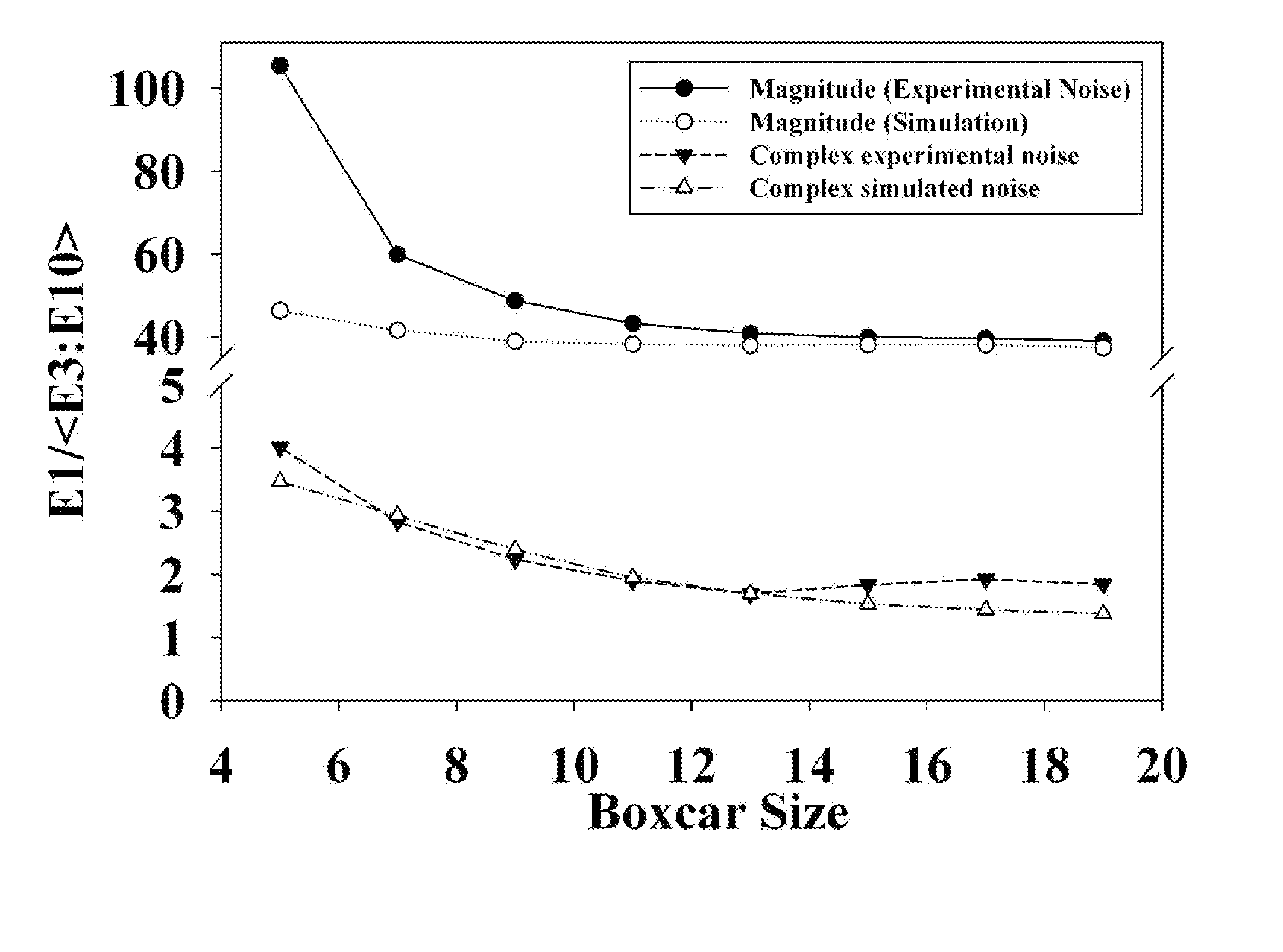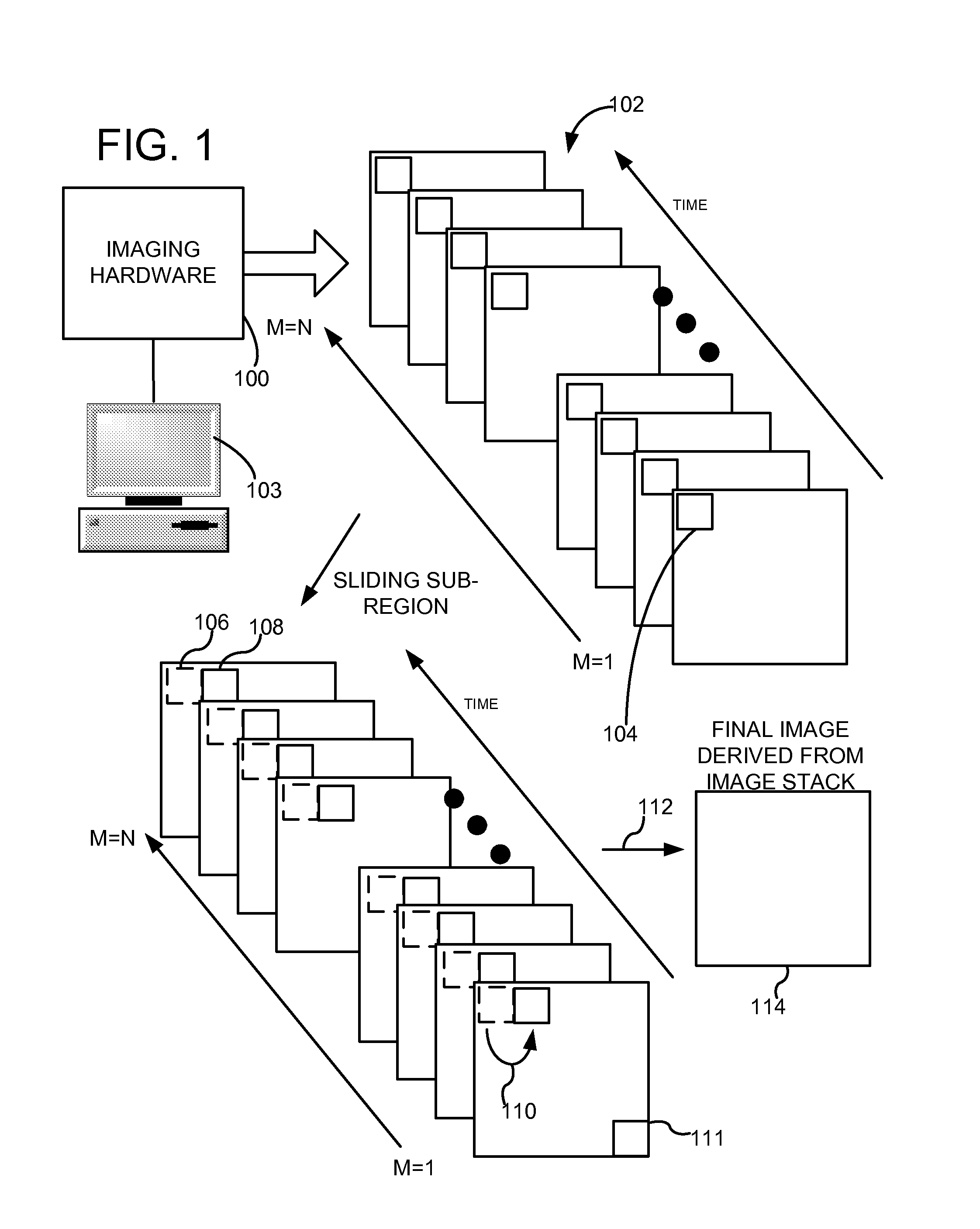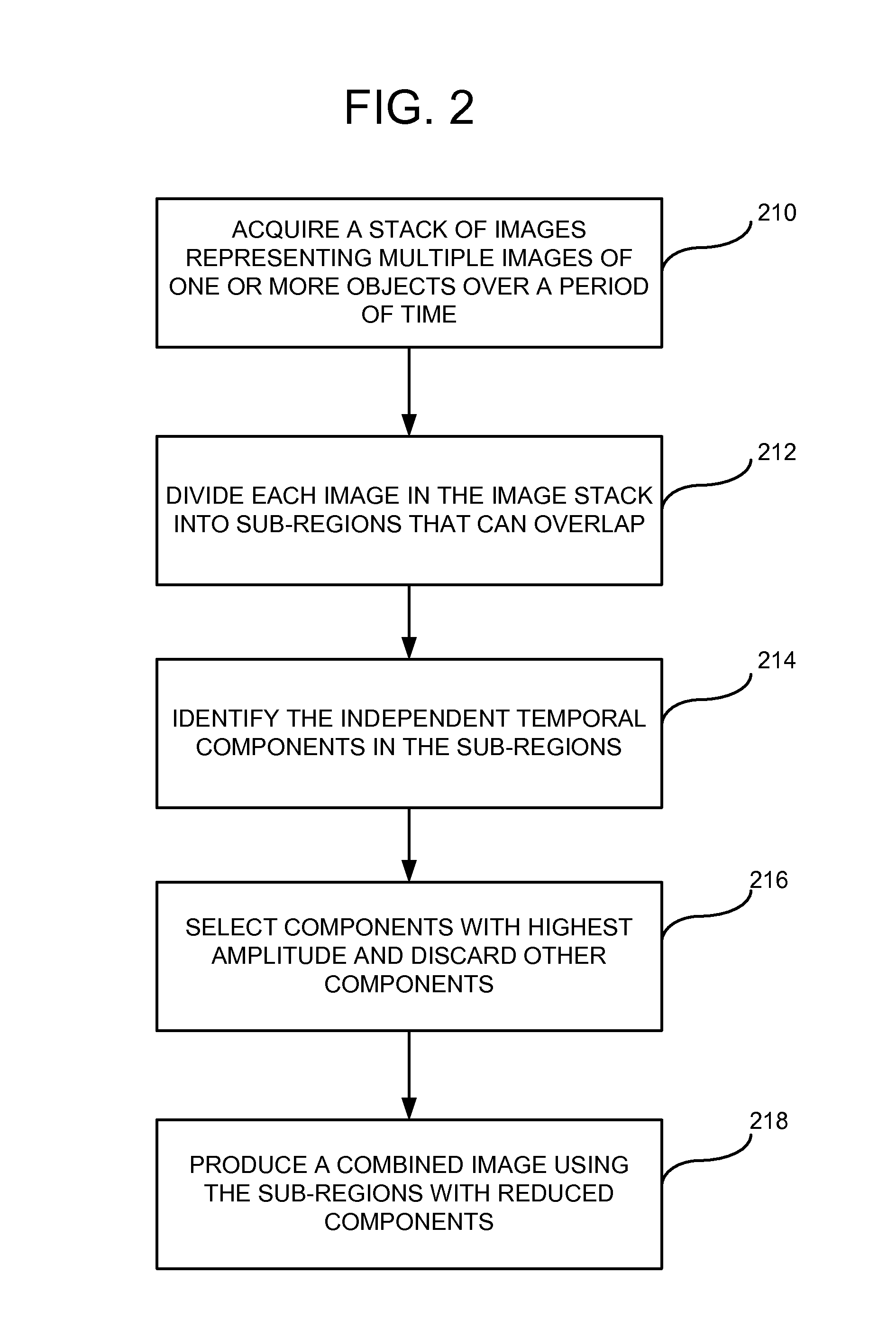Signal-to-noise enhancement in imaging applications using a time-series of images
a time-series, signal-to-noise enhancement technology, applied in the field of imaging, can solve the problems of high noise level, inability to solve motion-induced signal loss, and inability to help with signal attenuation, so as to improve imaging
- Summary
- Abstract
- Description
- Claims
- Application Information
AI Technical Summary
Benefits of technology
Problems solved by technology
Method used
Image
Examples
Embodiment Construction
I. General Description
[0031]Disclosed below are embodiments of signal-to-noise enhancement in imaging applications that use a series of images. The embodiments should not be construed as limiting in any way. Instead, the present disclosure is directed toward all novel and non-obvious features and aspects of the various disclosed methods and systems, and equivalents thereof, alone and in various combinations and sub-combinations with one another. The methods disclosed herein are not performed purely in the human mind. Rather, they are performed using medical imaging hardware and computers to process the images.
[0032]As used in this application and in the claims, the singular forms “a,”“an” and “the” include the plural forms unless the context clearly dictates otherwise. Additionally, the term “includes” means “comprises.” When used in a sentence, the phrase “and / or” can mean “one or more of” the elements described in the sentence. Embodiments described herein are exemplary embodiment...
PUM
 Login to View More
Login to View More Abstract
Description
Claims
Application Information
 Login to View More
Login to View More - R&D
- Intellectual Property
- Life Sciences
- Materials
- Tech Scout
- Unparalleled Data Quality
- Higher Quality Content
- 60% Fewer Hallucinations
Browse by: Latest US Patents, China's latest patents, Technical Efficacy Thesaurus, Application Domain, Technology Topic, Popular Technical Reports.
© 2025 PatSnap. All rights reserved.Legal|Privacy policy|Modern Slavery Act Transparency Statement|Sitemap|About US| Contact US: help@patsnap.com



